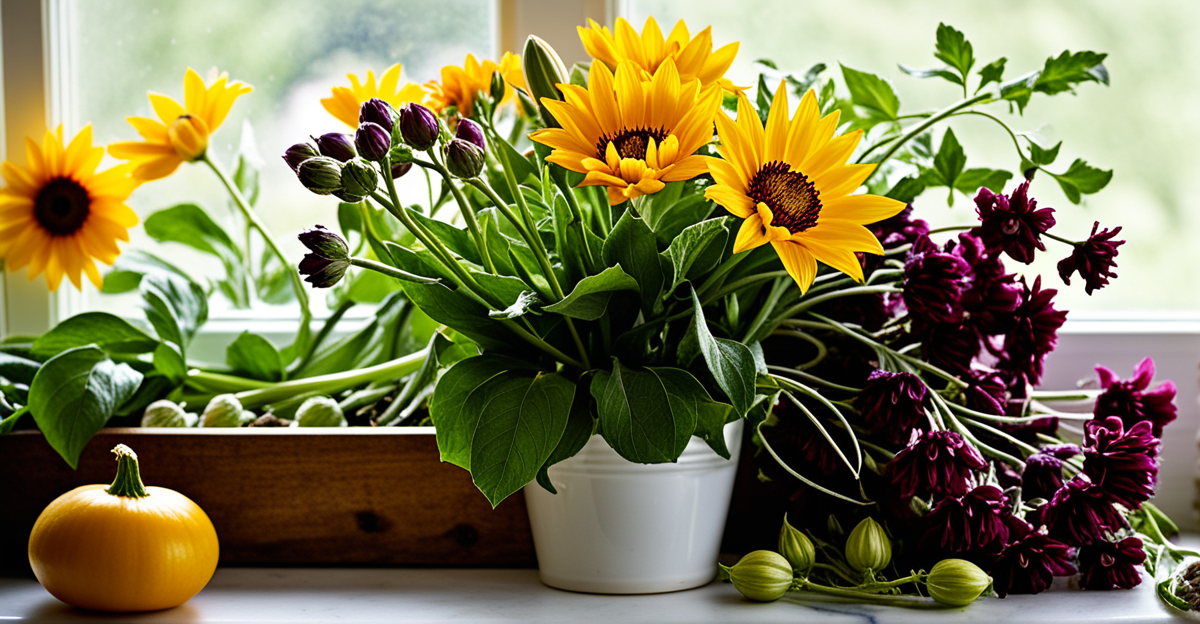Understanding Heirloom Blossoms and Pet Safety
Heirloom flowers are traditional plant varieties passed down through generations. Their significance lies not only in preserving botanical heritage but also in offering diverse, natural gardens. For pet owners, choosing non-toxic plants for pets is paramount. These heirloom flowers often pose fewer risks compared to some modern hybrids, which may contain synthetic modifications or chemicals.
The distinction between heirloom and hybrid flowers is important for pet-safe gardening. Hybrids are bred for traits such as colour or durability but may introduce toxicity unknowingly. In contrast, heirloom flowers are typically tested by long-standing use, reducing the chance of harmful effects on cats and dogs.
In parallel : How Can You Enhance the Well-being of Your Pets During Seasonal Changes in the UK?
By incorporating heirloom blooms known to be non-toxic plants for pets, gardeners can create environments where pets roam freely without the fear of ingesting dangerous plants. This careful selection supports a wholesome, safe living space for animals while maintaining beautiful garden aesthetics. This balance highlights why heirloom blossoms are increasingly favored by pet-friendly households.
Understanding Heirloom Blossoms and Pet Safety
Heirloom flowers are traditional plant varieties that have been passed down through generations without genetic modification. Unlike hybrids, which are bred for specific traits, heirloom flowers retain their natural characteristics, including resilience and growth patterns. This purity often means their chemical composition is more predictable, which is crucial when considering pet safety.
Have you seen this : How Can UK Pet Owners Provide Enrichment for Their Furry Friends?
Choosing non-toxic plants for pets is essential in pet-friendly homes to prevent accidental poisoning. Many household pets, especially cats and dogs, are curious and may chew on plants. Selecting non-toxic flowers ensures that if pets nibble on them, they are less likely to suffer adverse reactions. Pet-safe gardening revolves around understanding plant toxicity levels and opting for species that are safe in shared living environments.
The distinction between heirloom and hybrid flowers influences pet safety significantly. While hybrid blooms may offer aesthetic appeal and disease resistance, some can harbor toxic elements introduced during crossbreeding. Heirloom flowers, being naturally evolved, often present safer alternatives, making them preferred choices for any gardener conscious about maintaining a pet-safe environment without sacrificing beauty or biodiversity.
Health Benefits and Non-Toxic Qualities of Heirloom Blossoms
Heirloom flowers offer distinct health benefits by naturally providing non-toxic flowers that are safer for pets and their environment. Unlike many commercial hybrids, these plants typically avoid synthetic pesticides and fertilizers, reducing chemical exposure risks for cats and dogs. This makes heirloom varieties ideal safe plants for cats and dogs, promoting healthier indoor air and lessening allergic reactions common in chemically treated plants.
Which heirloom blossoms are considered non-toxic and beneficial? Popular examples include daisies, sunflowers, and snapdragons. These non-toxic flowers have minimal chances of causing harm if pets nibble on them, creating a calmer and safer household atmosphere.
How does heirloom plant care minimise risks? Their natural resilience often requires fewer chemical interventions. This reduces harmful residues that can accumulate on leaves or soil, limiting pets’ exposure and ingestion of hazardous substances—a crucial advantage in pet-safe gardening.
Incorporating heirloom flowers enhances a home’s ecological balance. Their time-tested genetics contribute to robust plants less prone to disease, meaning fewer treatments that could endanger pets. Therefore, heirloom blossoms not only beautify but also actively support healthier living spaces for pet owners seeking natural, pet-safe gardening solutions.
Health Benefits and Non-Toxic Qualities of Heirloom Blossoms
Heirloom flowers offer notable health benefits for pets and their living environments. Because these plants have evolved naturally over generations, they typically contain fewer synthetic chemicals and pesticides, making them gentle around curious cats and dogs. Selecting non-toxic flowers from heirloom varieties reduces harmful exposure, supporting pet well-being without compromising garden beauty.
Common non-toxic heirloom blossoms include varieties like violets, California poppies, and snapdragons. These plants are known for their safety around pets and contribute positively to household ecosystems by attracting beneficial insects without posing risks. Choosing such heirloom plants ensures a welcoming space where pets can explore safely.
Moreover, heirloom varieties often require minimal chemical intervention in their care. This translates to fewer fertilizers or pesticides in pet-safe gardening, further lowering the chances of pets encountering toxins. When gardeners follow natural care methods tailored to heirloom plants, they help maintain a healthier environment for their animals.
In summary, heirloom flowers combine natural resilience with non-toxic qualities that make them excellent choices for homes with pets seeking safe and vibrant green spaces. Their health benefits extend beyond appearance, championing both organic gardening and pet safety.
Pet-Safe Heirloom Blossoms: Recommended Varieties
Choosing pet-safe heirloom flowers involves selecting non-toxic blossoms that are visually appealing but safe for curious cats and dogs. Among the most beloved are daisies, appreciated for their cheerful white petals and resilience. Sunflowers stand out with their vibrant yellow blooms and are generally safe indoor plants for pets, offering a familiar garden friend without toxicity. Another excellent choice is snapdragons, which combine colorful variation with pet safety, widely regarded as safe indoor plants for pets.
When selecting varieties, consider your household’s specific pets—cats may prefer low-growing flowers they can easily nibble, while dogs might be drawn to sturdier stems. Understanding these preferences helps gardeners position plants to reduce risk.
Visual identification can be simplified by noting key traits: daisies typically have a yellow central disk surrounded by white petals; sunflowers feature large, round yellow heads; snapdragons display tubular flowers that resemble dragon mouths. While online resources help, confirming a plant’s status as a non-toxic flower ensures confidence in your choices.
In summary, combining knowledge of pet-safe heirloom flowers with awareness of pet habits leads to safe environments where plants and animals coexist beautifully.
Understanding Heirloom Blossoms and Pet Safety
Heirloom flowers are traditional plant varieties preserved over generations without genetic modification. Their significance lies in maintaining natural traits, which often means a lower likelihood of harmful chemicals, making them ideal for pet-safe gardening. Unlike hybrids bred for specific features such as colour or durability, which may unintentionally introduce toxicity, heirloom flowers tend to be more predictable in their chemical composition.
Choosing non-toxic plants for pets is critical because cats and dogs frequently investigate their surroundings by nibbling on plants. Selecting heirloom flowers known to be non-toxic reduces the risk of accidental poisoning. This careful choice supports a garden environment where pets can safely explore without harm.
The distinction between heirloom and hybrid flowers is vital for pet safety. While hybrids can bring aesthetic variety, they may harbor synthetic chemicals or toxins resulting from breeding. On the other hand, heirloom flowers generally avoid these risks due to their natural evolution, providing non-toxic plants for pets that align well with responsible, pet-conscious gardening practices.
Understanding Heirloom Blossoms and Pet Safety
Heirloom flowers are traditional plant varieties that have been preserved through generations, maintaining their original genetics without modern modification. They hold unique value for pet-safe gardening because their long history of cultivation provides insight into their effects on animals, unlike many newly bred hybrids.
Why is choosing non-toxic plants for pets crucial? Many pets, especially cats and dogs, naturally explore their surroundings by biting or chewing plants. Exposure to toxic varieties can cause harmful reactions ranging from mild irritation to severe poisoning. Therefore, selecting heirloom flowers that are verified as non-toxic reduces these risks, creating safer spaces for pets to roam.
What differentiates heirloom from hybrid flowers regarding safety? While hybrids may be bred for aesthetic traits or durability, they sometimes introduce unknown toxins or chemical compounds through crossbreeding. In contrast, heirloom flowers typically display stable chemical profiles due to their preserved genetics and traditional care practices. This stability enhances their suitability as non-toxic plants for pets in home gardens.
Choosing heirloom varieties thus supports pet-safe gardening by minimizing toxin exposure without sacrificing the beauty and biodiversity of your garden.
Understanding Heirloom Blossoms and Pet Safety
Heirloom flowers are heirloom plant varieties preserved through generations, maintaining their original, natural genetic traits. Their significance lies in offering non-toxic plants for pets, crucial in pet-safe gardening environments. Unlike hybrids, which can incorporate genetics promoting traits such as size or colour but may introduce unintended toxins, heirloom flowers tend to have more stable, less chemically altered profiles.
Why prioritize non-toxic plants for pets? Cats and dogs often explore using their mouths, so plants with harmful chemicals or unknown toxins risk accidental poisoning. Choosing heirloom flowers reduces this threat because their chemical makeup is more predictable and generally safer.
What distinguishes heirloom from hybrid flowers regarding pet safety? Hybrids may be bred with traits that unknowingly increase toxicity or require chemical treatments that can be harmful to pets. In contrast, heirloom varieties typically avoid this due to their natural evolutionary history, making them better suited for pet-safe gardening. They allow gardeners to cultivate lush, attractive gardens without compromising animal health, aligning beauty with safety effectively.






